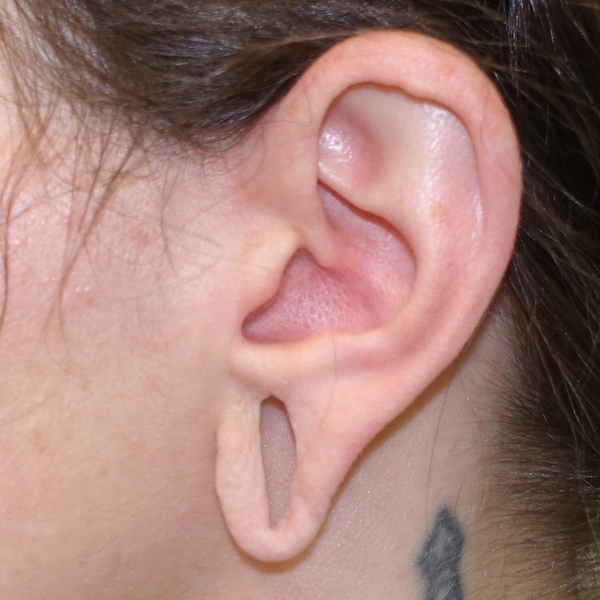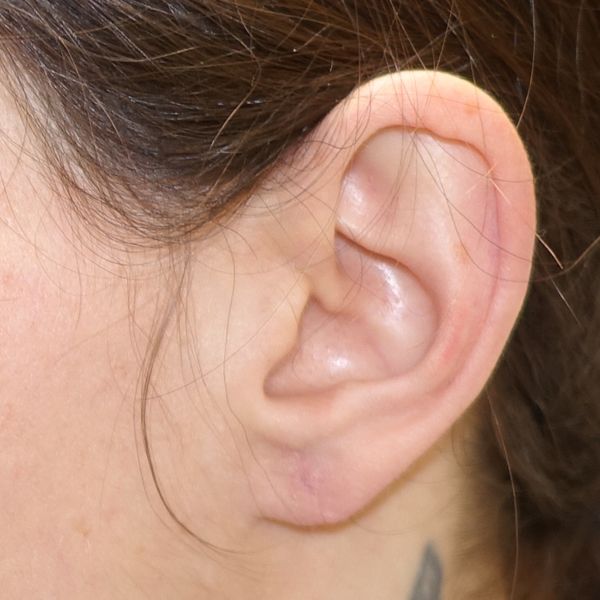The earlobe in an important aesthetic area of the face. Commonly enhanced with earrings, the weight of the jewelry can stretch the piercing hole or even tear the earlobe over time. Accidents and injuries involving earrings, such as hoop earrings, being ripped through the ear are also common. Ear stretching (also called ear gauging) is when you gradually stretch out pierced holes in your earlobes so that ear plugs can be placed. While it appears quite normal while the earring is in place, when it is removed there is nothing to support the elongated and stretched skin that then sags. Excessively stretched earlobe are usually permanently altered, and Earlobe Repair & Reconstruction surgery is needed to restore them back to a more anatomic appearance.
FACE PROCEDURES, VANCOUVER
Earlobe Repair & Reconstruction
Earlobe Repair & Reconstruction
What To Expect During The Procedure
Earlobe Repair & Reconstruction surgery is performed under local anesthetic, and while you may feel some movement and light pressure on your ears, you should not be in any discomfort while the surgery is carried out. Unlike an earlobe reduction, the incisions of an earlobe reconstruction will vary depending on the nature of the injury. For a split earlobe from an earring, the repair will remove a minimal amount of skin, with a resultant straight-line scar and contour that will be similar to the pre-injury ear. For ears that have been stretched with a plug, this will require a more complex procedure that will vary in the incision placement and final ear contour. The earlobe incisions will be closed using dissolvable sutures at the back of the earlobe and non-absorbable sutures that will need to be removed at 7 days on the front of the ear. Polysporin and a dressing will be placed immediately after the procedure.
What To Expect During The Recovery Period
Patients should keep their incisions dry for 24 hours. There may be some minimal bleeding from the incision for the first few days, so we advise placing a towel over your pillow. Swelling and some mild discomfort is normal after the procedure, and Tylenol or Advil can be taken. A thin layer of polysporin should be placed over the incision every day until the sutures from the front of the ear are removed. Heavy exercise should be avoided until the sutures are removed. The incisions will be red after the sutures are removed. Swelling and redness of the incision will continue to fade, with the resulting scar seen after a year. Scar massage is recommended at 2-3 weeks to help soften the scar tissue. Scar tape or gel can also be used, with the window of opportunity being 1-6 weeks to improve the scar.
Possible Complications
Some of the potential risks associated with this procedure include hematoma (blood collection), infection, poor scarring, delayed wound healing, numbness, asymmetry, and notching of the scar.

